Using a Plane
Note: When the plane is in between uses, Paul recommends that you should keep it upright with the blade against the benchtop, contrary to popular opinion. This way is not considered the norm, as they often used to teach in schools to lay it on its side. This was thought to protect the blade from being placed upon other tools and damaging it. Paul has found that it is less likely to get damaged if the blade is not exposed. Also, as it is placed upright it is always ready to be used, too.
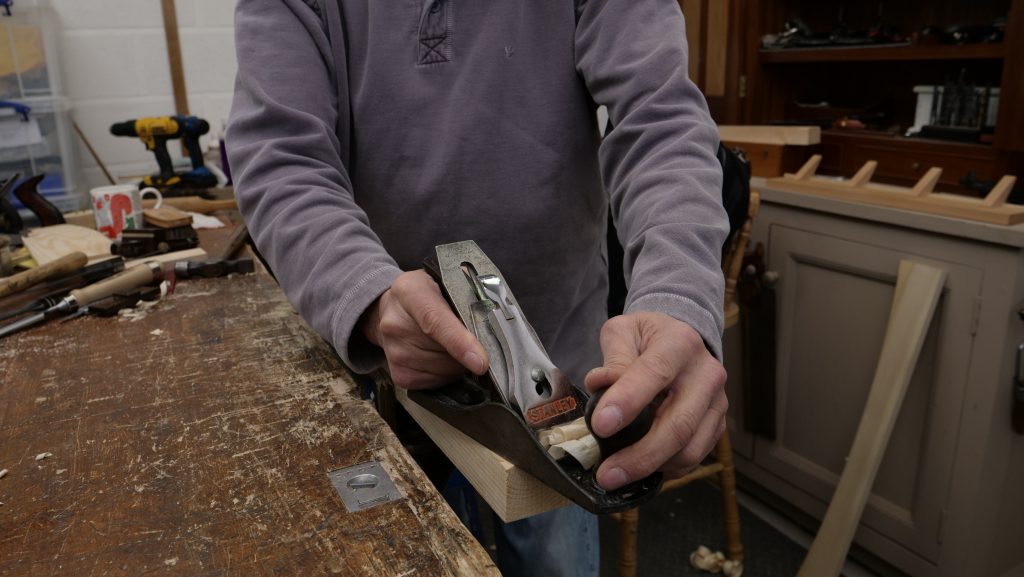
When holding the plane, use your dominant hand to grip the back handle, with your index finger in line with the plane. Put your dominant foot back, transfer your weight from your back foot to your front as your push the plane along the length of the wood. Your stance is really important as it will allow you to use your body weight to push the plane forward. Make sure your stock is tightly secured in a vise when you push against the surface, so it will withstand the pressure. After each pass, turn the adjustment wheel clockwise until it touches the wood. Test this by taking shavings on the left and right side of the blade, move the lateral adjustment lever a tiny bit at a time until even shavings appear. Keep the front of the sole registered on the wood, slightly lift the heel on the return pull. If you are finding it too hard to push, ease the blade off a little (by turning the adjustment wheel counter clockwise) and take off smaller shavings, this will take slightly longer but requires less strength. When you hear the blade drop off the end of the wood, you know you are at the end of your stock. Make sure you don’t lift off the wood until the shaving has come away from the wood otherwise you will be left with what is called a ‘step down’. When planing the large face of the wood, start halfway and work from the left to the right, then drag the plane back to the end and do that second half from left to right.
HOLDING A PLANE GALLERY
USING A PLANE GALLERY
Further Reading
To read more on the plane, we recommend the following from Paul’s blog:
Plane Questions Answered- Bent Plane Irons

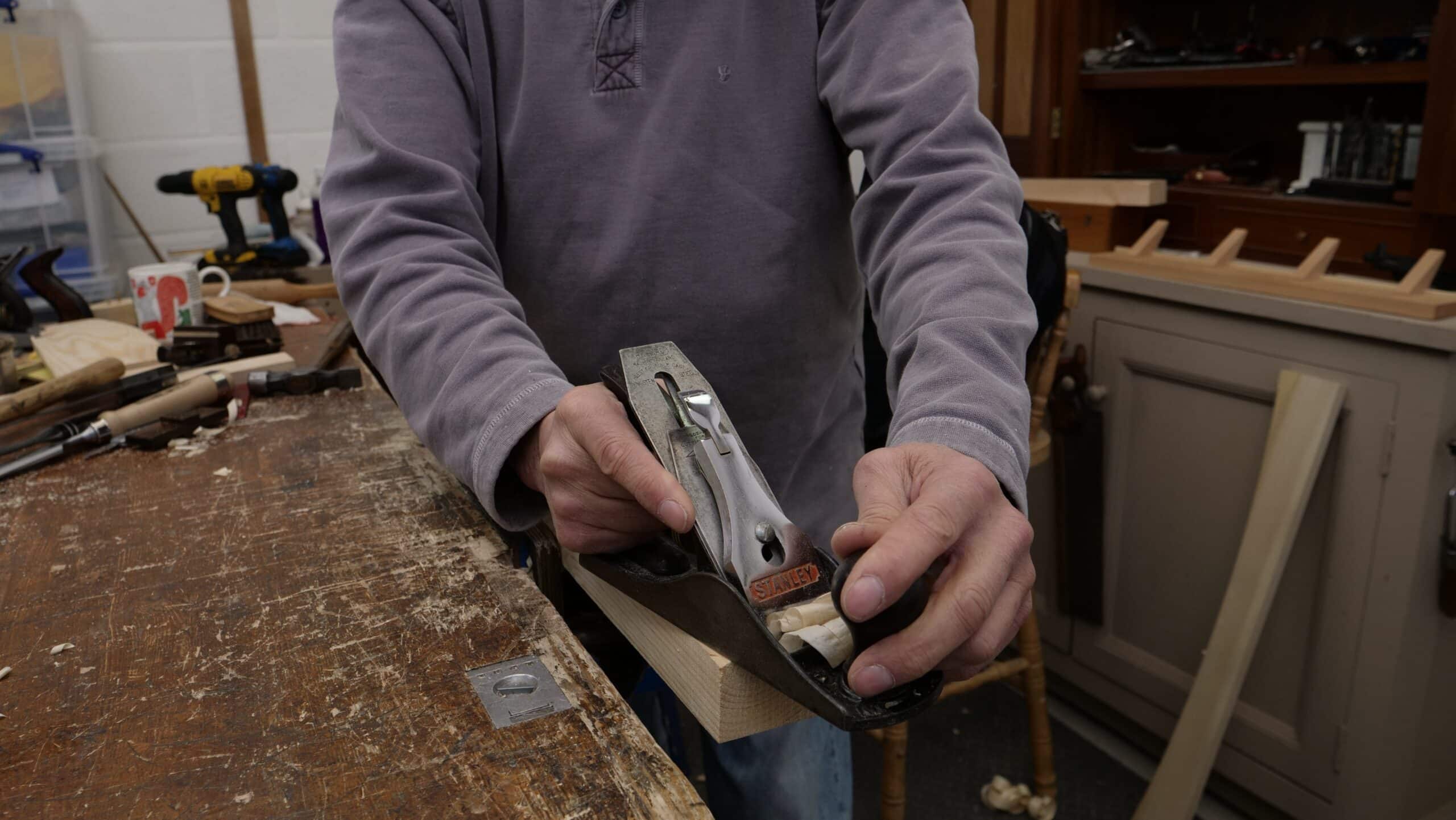
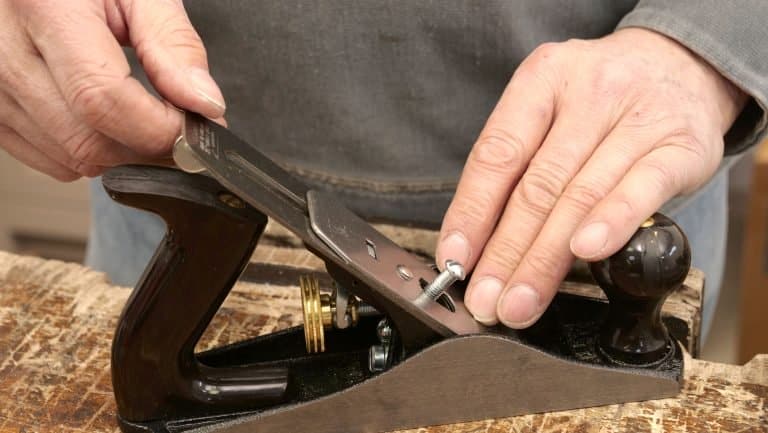
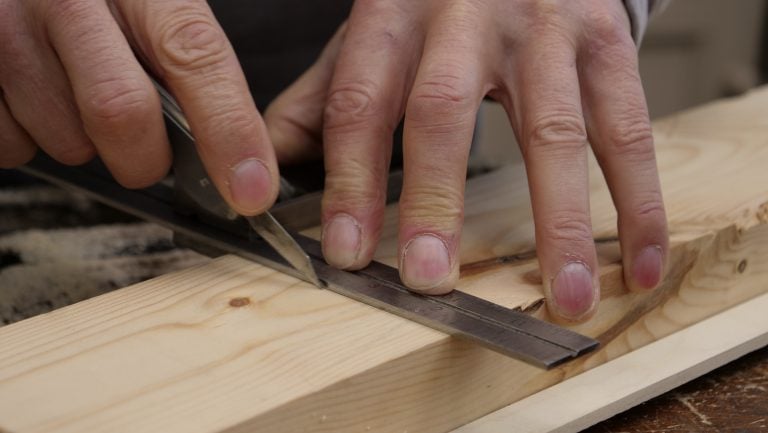


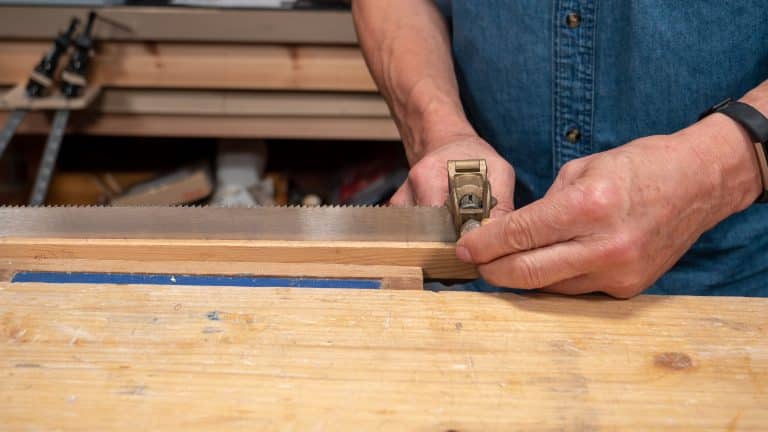
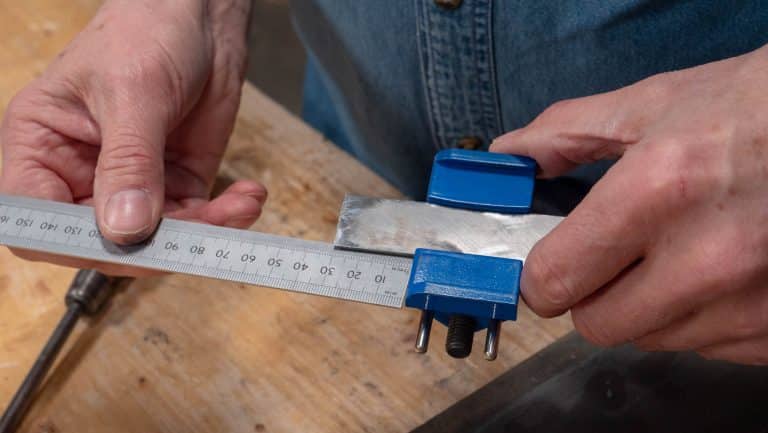
Hi Paul
Whenever I see your planing technique I notice that the body of the plane is at a slight angle with respects to the direction of movement forwards along the work piece. Is there a reason for doing this?
Thanks in advance
Alastair
Hi Alistair,
Paul says:
Yes, the reason mainly is that it is a comfortable body position, because your shoulders reaching down from your hands means it is much easier to direct the plane from the triangular position formed by the shoulders down to the hands holding the plane.
Kind Regards,
Izzy
Hello Paul
How come in my case my wood is planed in a taper towards the end of a piece of wood? Seems I manage to shave of more wood at the end of my wood.
Kind regards,
Pjotr
Hi Pjotr,
Paul says:
This is a good question, I like it. The reason is, when you start the cut there is a certain diffidence caused through a lack of confidence, nothing wrong with that. As you push forward, there is a tendency to press harder because your confidence increases, it takes time and practise to establish a surface-parallel cut. To correct yourself, take 3 or 4 cuts from one end, then turn the wood around and take the same amount of cuts from the opposite direction. This should result in evening out the bias.
Kind Regards,
Izzy
Thanks Paul.
I will give it a try.
Kind regards,
Pjotr
Hi Izzy/Paul,
When planing wide boards (greater than the width of the iron), is it normal to have subtle step downs along the path the plane traveled where the iron’s corner(s) meet the wood? These step downs are very subtle and can only be seen if the lighting is right. I sharpen with diamond plates and suspect the corners of my iron may need to be rounded over more. Perhaps these very small step down’s are normal for a hand planed surface?
Thanks,
Jon
Hi Jon,
It is possible that you may need to round over the outside wings of your iron a little more. However, if you’re creating noticeable ridges with every plane stroke, the chances are your board is not flat, and you’ve probably set your plane to too heavy a cut. If you don’t have much experience, you should check your board with a straight edge as you plane. The fact that you’re taking shavings is no guarantee that you’re planing flat. Also remember that clamping a relatively thin board in the vise will compress it unevenly, causing additional problems. On a flat board, you should be able to take thin shavings across the whole width.
I hope that helps,
John